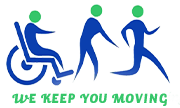What is a stroke?
A ‘brain attack’, or a stroke occurs when blood supply to brain cells is disrupted, depriving them of oxygen and nutrients which leads to their rapid disintegration. As brain cells begin to die, functions performed by the affected area such as muscle control, movement of arms, legs, etc. are lost. Look for signs such as trouble in speaking and understanding, paralysis and numbness, blurred or blackened vision, headache, dizziness, vomiting, altered consciousness and seek
What causes a stroke?
A stroke can be caused either by a blocked artery, as in the case of ischemic stroke, or due to the leaking or bursting of a blood vessel during a hemorrhagic stroke. Certain lifestyle and medical risk factors such as obesity, physical inactivity, consumption of alcohol, high blood pressure, cholesterol, and diabetes, etc. increase the chances of causing a stroke. People who are 55 and older are at a higher risk and so are those who have a personal or family history of stroke.
• Types of stroke
It is essential to retrain muscles and often very specific strengthening is needed to achieve a full recovery after a surgery. Common Surgeries requiring Post-Operative Physiotherapy Care are:
Passive stretching and joint mobilizations
• As a particular treatment is suitable for a certain type of stroke, diagnosing the cause quickly reduces the amount of damage done to the brain. Types of strokes include:
• Ischemic stroke These occur when an artery is either blocked or becomes too narrow leading to the formation of clots. Treatment includes administrating tissue plasminogen activator (TPA) directly into an artery of the brain to dissolve the clot or the use of a catheter to remove the clot physically.
• Hemorrhagic stroke These are caused when blood leaks into the brain which in turn creates pressure. Treatment is focused on controlling the overall pressure of blood and to prevent any sudden constrictions of blood vessels.
How to prevent a stroke?
• Addressing the underlying causes provides the best shot at reducing the chances of a stroke. Additionally, Certain lifestyle changes that can help are:
• Having a healthy & nutritious diet
• Maintaining a healthy weight
• Doing regular physical activitiesy
• Avoiding alcohol and tobacco
• Other medical factors such as keeping diabetes, blood pressure and cholesterol under control can also reduce the risk of stroke.
• Physiotherapy for stroke
• If the stroke affects that area of the brain which controls muscle movement, then a person may experience symptoms such as muscle spasms, balance problems, and joint pain . Regular physiotherapy sessions conducted early in a patient’s journey will help in restoring mobility, improving health, managing pain and instilling confidence in the patient to remain active and involved in everyday activities. Treatments include exercises such as stretching, walking, manual therapy to massage joints and assistive device training.
• With you, when you need us the most
• Rehabilitation Nursing
• Restore physical functioning
• Treat problems of movement, balance and coordination
• Assistance in activities of daily living
• Assistance in mobility
• Assistance in mobility
• Regain communication and swallowing problems
• Education for stroke survivors and family caregivers at home
- Exercise Therapy
- Chiropractic
- Orthopedic Rehabilitation
- Electrotherapy
- Post Stroke Rehabilitation
- Post Operative Physiotherapy
- Migraine Treatment
- Ergonomic Counseling
- Posture Correction
- Cupping Therapy
- Fitness- Diet and Nutrition
- Online Consultation
- Home Physiotherapy Services
- Old Age Care
- Pre and Post Natal Care
- Vascular Care

